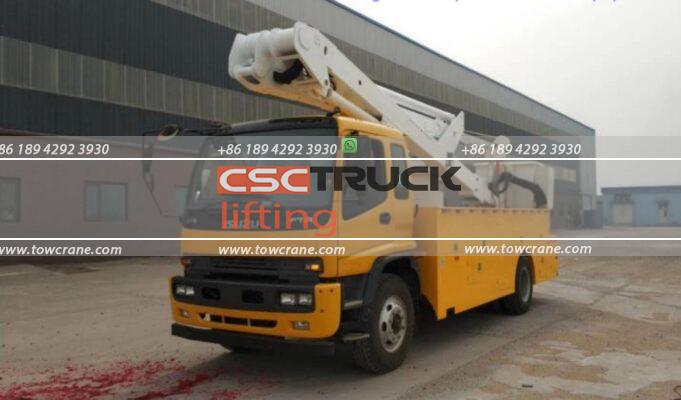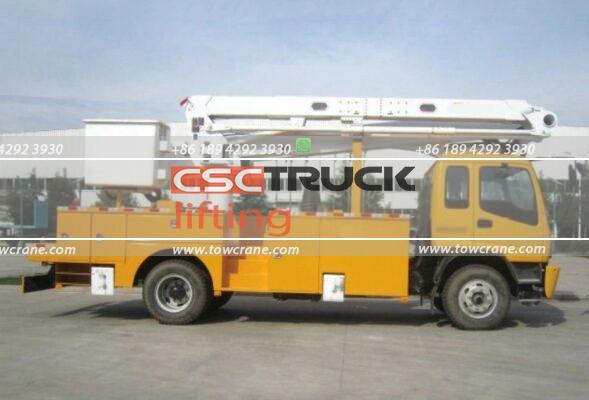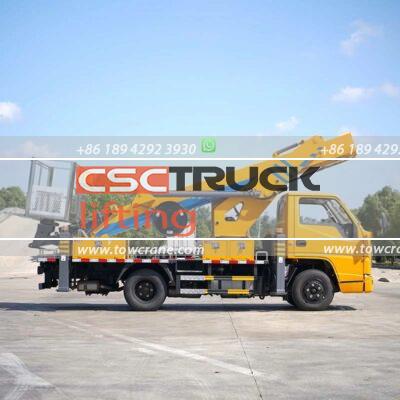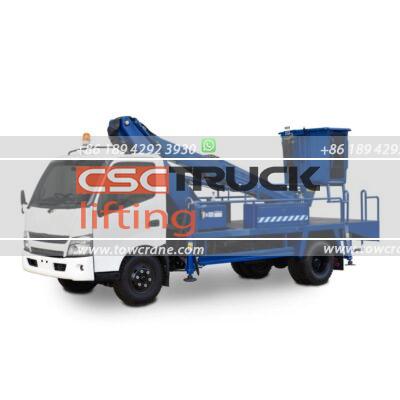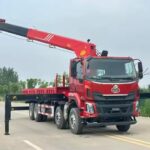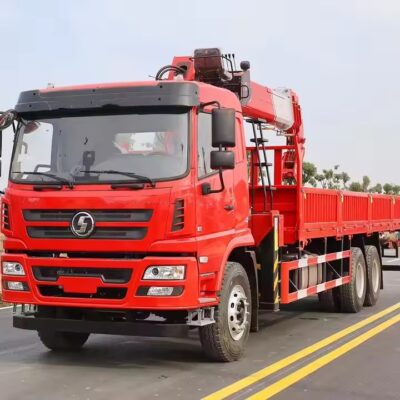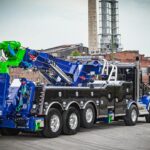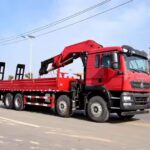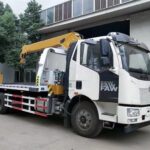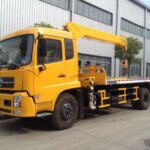Rotator tow trucks, often referred to simply as “rotators,” represent the pinnacle of towing and recovery technology. These formidable machines are designed to handle the most challenging and complex recovery operations, providing unmatched versatility and power. This article explores the features, applications, benefits, and maintenance of rotator tow trucks, highlighting their crucial role in the towing and recovery industry.
Understanding Rotator Tow Trucks
Rotator tow trucks differ from standard tow trucks primarily due to their rotating boom. This feature allows the boom to swivel 360 degrees, providing extensive reach and maneuverability. Here are the key components and features that define rotator tow trucks:
- Rotating Boom:
- The defining feature of a rotator is its hydraulic boom that can rotate 360 degrees. This capability enables precise positioning of the boom, making it possible to recover vehicles from difficult locations without repositioning the tow truck.
- Heavy-Duty Winches:
- Rotators are equipped with powerful winches capable of pulling heavy loads. These winches use high-tensile steel cables and robust motors to handle the recovery of large vehicles like trucks, buses, and construction equipment.
- Outriggers and Stabilizers:
- To ensure stability during recovery operations, rotator tow trucks are fitted with hydraulic outriggers and stabilizers. These extendable supports prevent the truck from tipping over when lifting or pulling heavy loads.
- Multiple Attachment Points:
- Rotators come with various attachment points and accessories such as chains, slings, and spreader bars, allowing operators to secure and lift vehicles safely and effectively.
- Advanced Controls:
- Modern rotator tow trucks feature sophisticated control systems, often including remote controls, that allow operators to maneuver the boom and winches with precision. These controls enhance safety and efficiency during recovery operations.
Applications of Rotator Tow Trucks
Rotator tow trucks are used in a wide range of recovery and towing scenarios, thanks to their versatility and power. Some common applications include:
- Accident Recovery:
- Rotators are essential for clearing accident scenes involving large vehicles. They can lift and reposition overturned trucks, buses, and trailers, ensuring that the roadway is cleared quickly and safely.
- Heavy Equipment Recovery:
- Construction sites and industrial areas often require the recovery of heavy machinery. Rotators can handle the weight and size of equipment like bulldozers, excavators, and cranes.
- Off-Road Recoveries:
- Vehicles that become stuck in difficult terrains, such as mud, snow, or water, can be challenging to recover. The rotating boom of a rotator allows it to reach and retrieve vehicles from almost any angle, making it ideal for off-road recoveries.
- Bridge and Waterway Recoveries:
- Recovering vehicles that have fallen off bridges or into waterways requires precise maneuvering. Rotators can position their booms over the edge of a bridge or waterway to lift vehicles out safely.
- Airplane Recovery:
- In cases of aircraft accidents or emergencies, rotators can assist in the recovery of small to medium-sized airplanes. Their reach and lifting capacity are crucial for such delicate operations.
Benefits of Rotator Tow Trucks
The advantages of using rotator tow trucks are numerous, making them invaluable assets in the towing and recovery industry:
- Enhanced Versatility:
- The 360-degree rotating boom allows for recovery operations from any angle, providing unmatched flexibility. This versatility is especially useful in confined spaces and complex recovery scenarios.
- Increased Efficiency:
- Rotators can complete recovery tasks more quickly and efficiently than traditional tow trucks. Their powerful winches and precise control systems reduce the time required to secure and lift vehicles.
- Improved Safety:
- The stability provided by outriggers and the ability to operate the boom remotely enhance safety for both operators and other road users. The reduced need to reposition the truck also minimizes the risk of accidents during recovery.
- Capability to Handle Heavy Loads:
- Rotators are designed to handle extremely heavy loads, making them suitable for recovering large commercial vehicles and industrial equipment. This capability expands the range of services that towing companies can offer.
- Reduced Road Closure Times:
- By efficiently clearing accident scenes and recovering vehicles, rotators help minimize road closure times. This benefit is particularly important on busy highways and in urban areas, where traffic disruptions can have significant economic impacts.
Maintenance of Rotator Tow Trucks
Given their complexity and the demanding nature of their work, rotator tow trucks require regular maintenance to ensure optimal performance and longevity:
- Routine Inspections:
- Regular inspections of the hydraulic systems, winches, cables, and boom are essential. Look for signs of wear, leaks, and other issues that could compromise safety and functionality.
- Hydraulic System Maintenance:
- The hydraulic system, which powers the boom and outriggers, should be checked for proper fluid levels and potential leaks. Regularly replacing hydraulic fluid and filters helps maintain system efficiency.
- Winch and Cable Care:
- Inspect winch cables for fraying, kinks, or breaks. Lubricate winch components to ensure smooth operation, and replace damaged cables promptly to prevent accidents.
- Engine and Transmission Service:
- Follow the manufacturer’s recommended maintenance schedule for the truck’s engine and transmission. Regular oil changes, filter replacements, and other engine services are crucial for reliable performance.
- Safety Equipment Checks:
- Ensure that all safety equipment, including lights, warning signals, and emergency shut-off systems, is functioning correctly. These features are vital for safe operation, especially during roadside recoveries.
- Cleaning and Corrosion Prevention:
- Regularly clean the truck to remove dirt, grime, and corrosive substances. Apply protective coatings to metal components to prevent rust and corrosion, which can compromise structural integrity.
Conclusion
Rotator tow trucks stand at the forefront of vehicle recovery technology, offering unparalleled capabilities and versatility. Their rotating booms, powerful winches, and advanced control systems make them indispensable for handling the most challenging recovery operations. By understanding the features, applications, benefits, and maintenance of rotator tow trucks, operators can maximize their efficiency and ensure the safety and reliability of their vehicles. Whether clearing accident scenes, recovering heavy equipment, or performing delicate off-road rescues, rotator tow trucks are the titans of the towing and recovery world, providing essential services that keep roads clear and vehicles safe.


